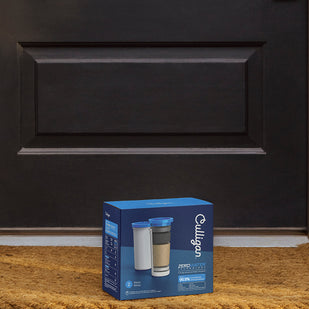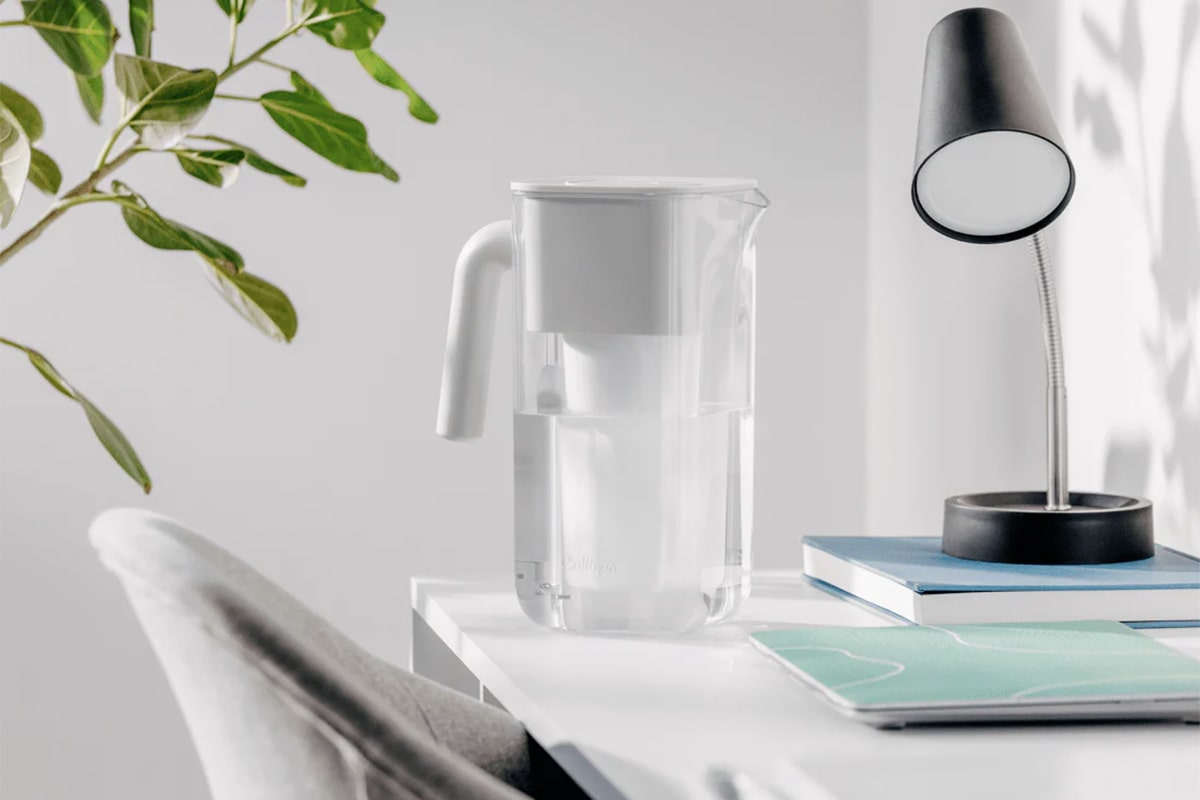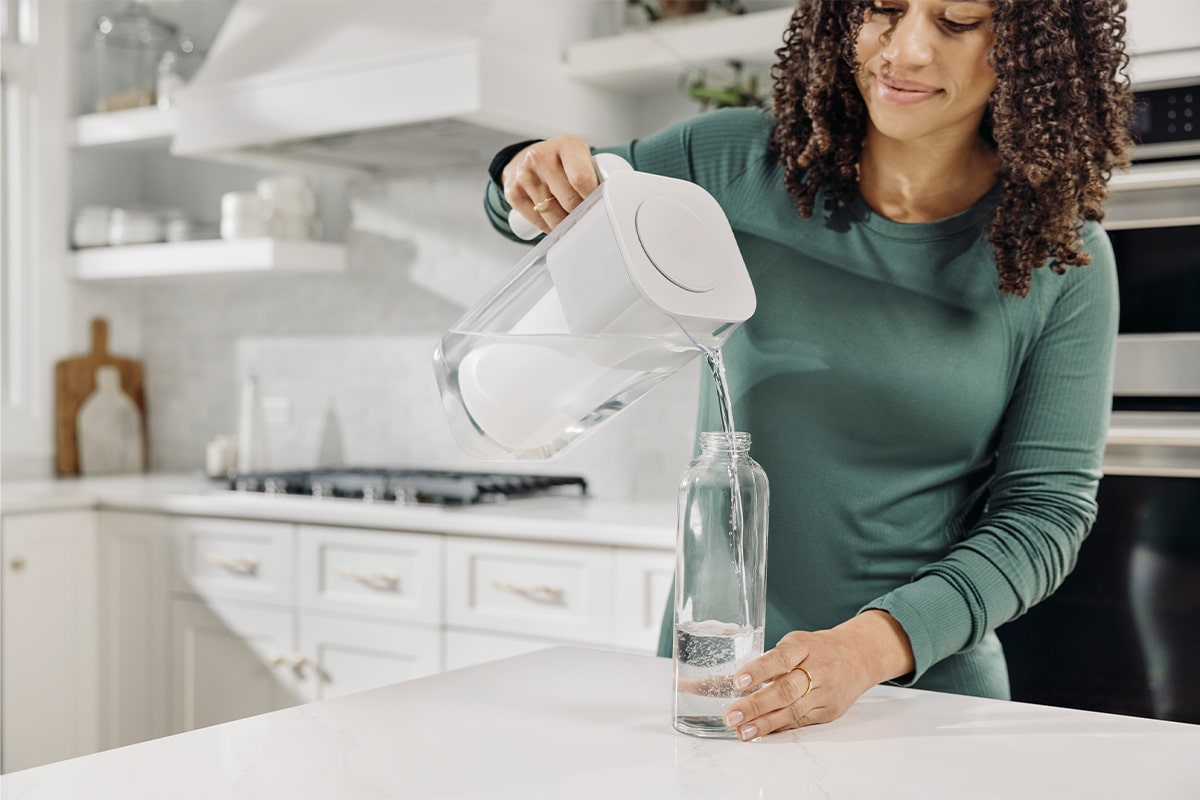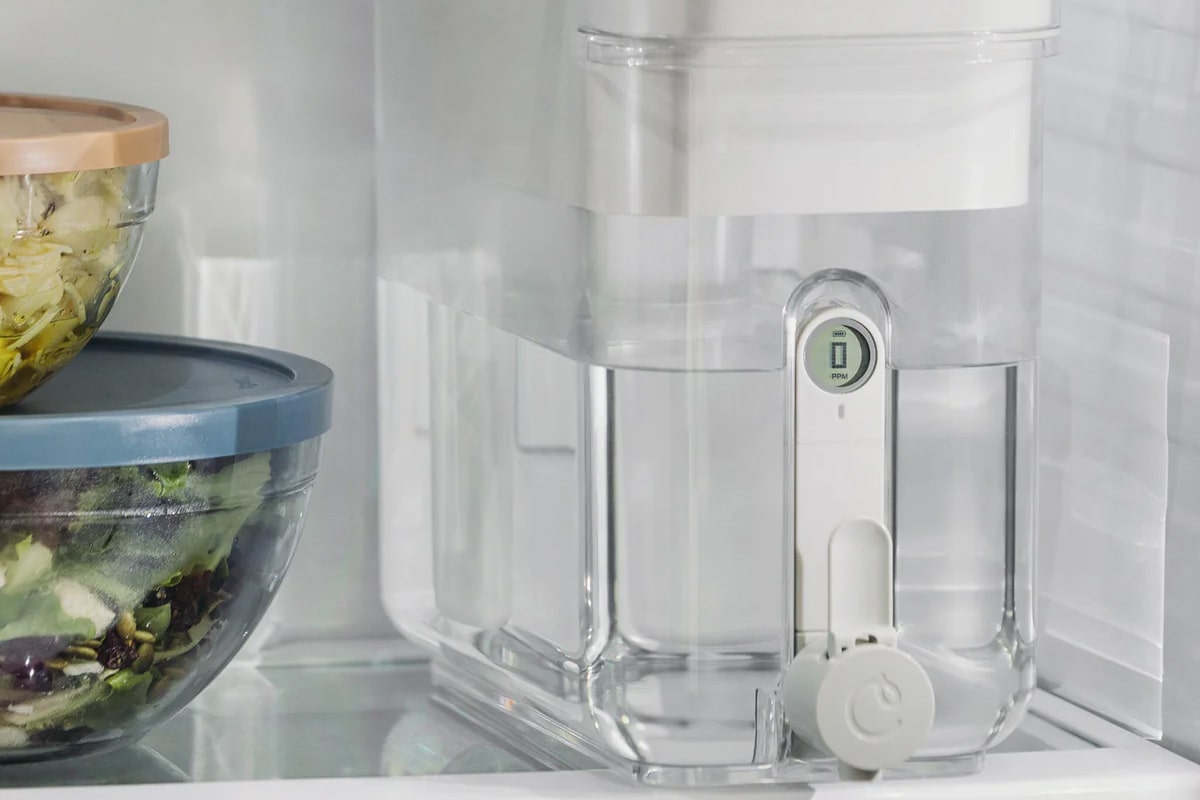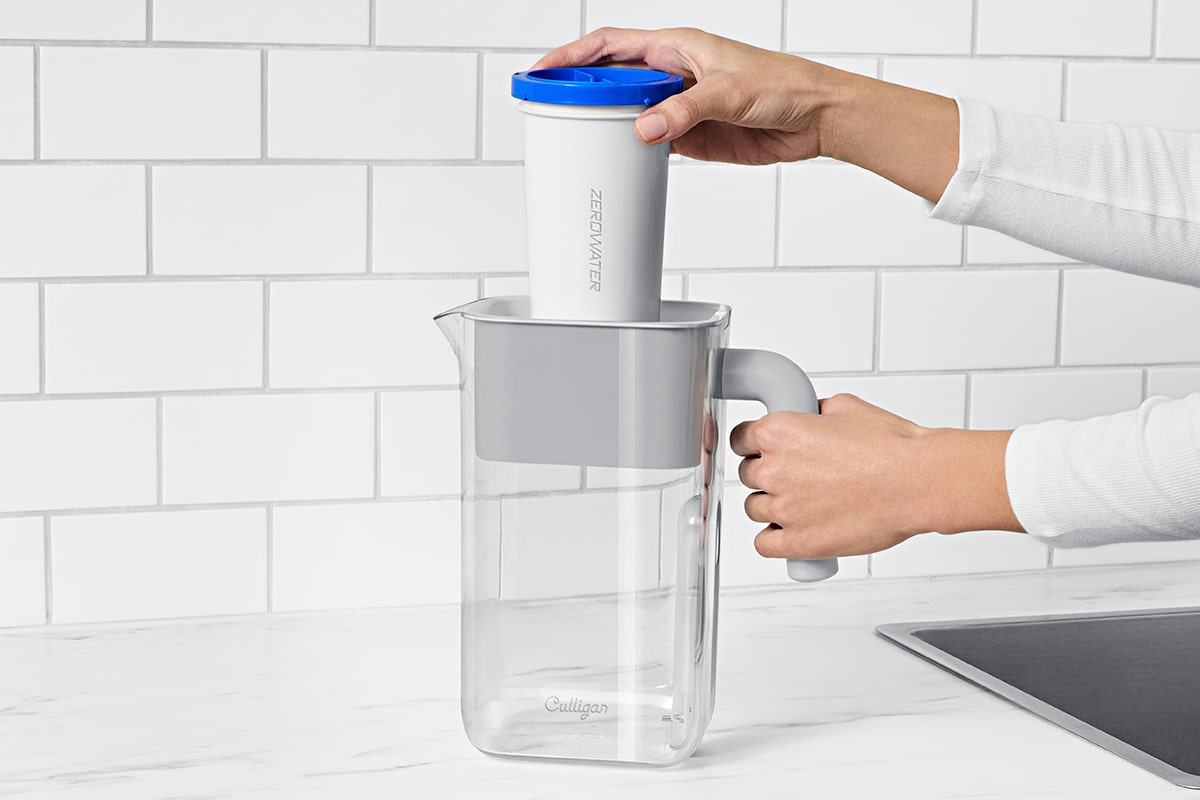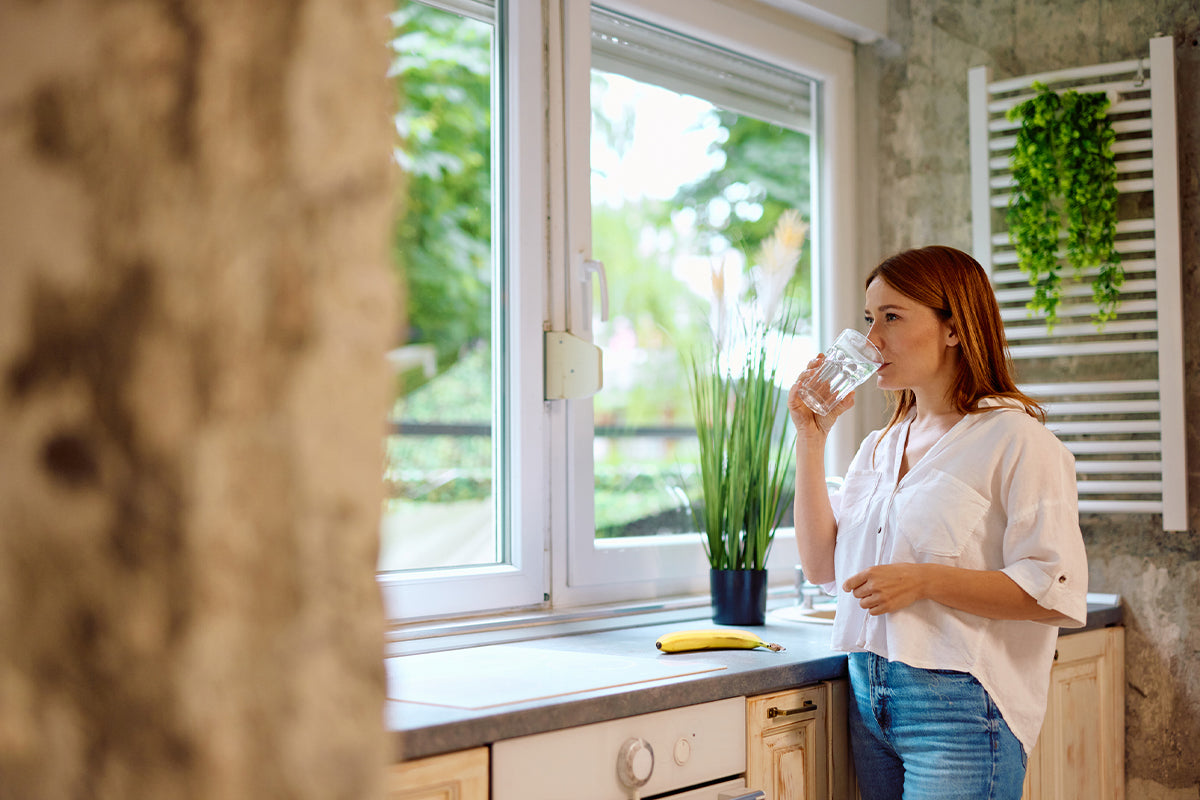Learning how to test tap water at home is a practical step towards understanding what you are really drinking. A TDS (Total Dissolved Solids) meter provides an instant reading of dissolved substances in water. This includes minerals, salts, and metals, helping you assess water quality easily.
In the UK, tap water is regulated under The Water Supply (Water Quality) Regulations 2016. Oversight over these regulations comes from the Drinking Water Inspectorate (DWI). Their 2024 annual report found that 99.97% of samples met quality standards. However, substances can still enter the water supply from ageing pipes or plumbing in your home before they reach your glass. Testing at home allows you to identify these variations and decide whether additional filtration is needed.
This Water Quality Month, we’ll explore three simple ways to test your tap water. We’ll also look at how to understand the results and how our certified filtration offers reassurance with every glass you drink.
Three Simple Ways to Test Your Tap Water
1. Use a TDS Meter for Instant Results
A TDS meter is one of the easiest tools for checking water quality at home. It measures the overall level of dissolved materials such as minerals, salts, and trace metals. The result is shown in parts per million (ppm). A higher reading indicates a greater concentration of dissolved solids. These solids can affect taste, clarity, and the build-up of limescale in kettles and appliances.
To test, fill a clean glass with cold tap water and place the reader’s tip into the sample. Within seconds, the meter displays your reading. The World Health Organization (WHO) states that drinking water is typically safe if its TDS levels are below 300 ppm. Meanwhile, levels exceeding 300 ppm may impact taste or appearance.
Our jugs & dispensers feature a built-in TDS meter, allowing you to check water quality every time you pour. Combined with our 5-stage filtration technology, they reduce 99.9% of dissolved solids. This ensures you enjoy consistently pure-tasting water.
2. Try a DIY Test Kit
DIY water testing kits can provide a quick snapshot of certain substances in your tap water. Most kits include paper strips and a colour chart, allowing you to check for chlorine, nitrates, pH, or hardness. Some advanced kits can also detect metals such as lead, which may leach into water from older pipes.
Using a kit is straightforward:
- Collect a sample of tap water in a clean container.
- Dip the strip into the water and wait for the indicator squares to change colour.
- Compare the result against the chart provided.
This gives you an estimate of concentration levels. The DWI reports that UK tap water often contains small amounts of chlorine, nitrates, and metals. Still, these substances are regulated to ensure they stay within safe limits. DIY kits can help you spot these elements at home, though accuracy varies depending on the brand.
Our replacement filters provide dependable protection between tests. They cut down on various contaminants, so your water remains consistently fresh.
3. Check Local Water Quality Reports
You can also check your local water provider’s annual quality report, sometimes called a Consumer Confidence Report. These documents show if your supply meets national safety standards. They also include data on substances like nitrates, fluoride, and residual chlorine.
Reports are usually available online by entering your postcode or visiting your water company’s website. They serve as a good reference for overall supply quality. But remember, they reflect average results for your region, not the specific conditions in your home. For instance, older plumbing might bring in metals like lead or copper, even when mains water meets national standards.
The Environment Agency tracks water resources in England. It also reports on ongoing challenges, including nitrate levels and chemical pollutants. While this gives helpful context, home testing is still vital for finding differences in your household supply. To supplement the official data, our support centre provides some great practical resources. These will help you maintain your filtration system and ensure consistent results.
How to Understand Your Water Reading
When you test your water at home, the results may appear as numbers, colours, or categories depending on the method used. Understanding these outcomes helps you decide what action to take.
- TDS Meter Readings: A result below 300 ppm is generally considered suitable for drinking water. Higher readings indicate more dissolved substances, such as salts or minerals. These can alter the taste and lead to limescale build-up in kettles and appliances.
- Chlorine Levels: DIY strips often detect chlorine, added to disinfect water. Levels are regulated in the UK to protect health, but higher readings may explain unusual taste or odour.
- Nitrate Levels: Nitrate concentrations in drinking water should not exceed 50 mg/l. The Department for Environment, Food & Rural Affairs (DEFRA) says that agricultural runoff can lead to excess nitrates. This makes it essential to check your results against these limits.
- pH Balance: A neutral pH close to 7 is generally ideal. Significant deviations may indicate corrosion in pipework or other water quality issues.
- Lead & Older Pipework: Properties built before 1970 may still contain lead plumbing. Even small amounts of lead in drinking water are a health concern, particularly for children and pregnant women. The UK Health Security Agency (UKHSA) advises the replacement of old lead pipes where possible.
If your results appear unusual or exceed recommended thresholds, retesting is a sensible step. You can also contact your water supplier for advice. Our performance & certifications show how our filters are independently tested. We do this to reduce a wide range of contaminants and offer our customers added reassurance.
From Testing to Taking Action
Testing your tap water at home gives you valuable insight into what you are drinking. A TDS meter or DIY kit might show higher dissolved solids, chlorine taste, or even traces of nitrates. Now that you have this knowledge, the next step is to choose a filtration that improves taste, clarity, and confidence for the long term.
Culligan’s 5-stage filtration technology is designed to address these concerns. This filter is certified to cut down more contaminants than regular filters. It removes 99.9% of dissolved solids, ensuring you get the purest-tasting water. With jugs and dispensers that have built-in TDS meters and handy bundle options, testing and filtering are easy to include in daily life.
Cleaner water starts at zero, and with Culligan's positive Trustpilot reviews, you can trust every glass.
